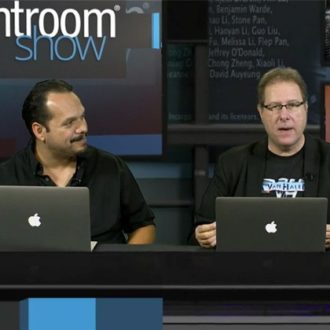Hey Gang: It’s the final installment of my 10-part series on 10 things I would tell a new Lightroom user, and we’re wrapping up number 10 with something that helps move you from Lightroom beginner to Lightroom intermediate.
PLUS: at the end of this post, I’ll recap all 10 of the thingies. OK, here we go:
#10: To Speed Your Workflow Start Making Presets Now
Lightroom has a lot of ways to add automation to your workflow, so you spend less time on the tedious, repetitive things, and that leaves you more time for the fun stuff. The problem is: not only do beginner’s not take the few seconds it takes to create these time-saving presets, I talk to more advanced users all the time who haven’t done it either. They say stuff like “Yeah, I really need to start making some…â€Â or “I know that’s what I should be doing…†and I think the reason why is that haven’t been making them all-along. If they started now (like you have the opportunity to), it would become a part of their workflow from the start and they would always have a smooth speedy workflow.
So, When and Where Do I Make These Presets?
For example, if you find yourself making a particular set of edits in the Develop Module more than just a couple of times, make a Develop module preset for it, so it’s always just one click away.
TECHNIQUE: Once your settings are in place, just go to the Presets panel in the Left Side panels, and click the + sign icon to the right of “Presets.â€Â This brings up the screen you see above. Click the “Check None†button at the bottom left to clear out the default setting of having every checkbox checked, then just put a checkbox beside the things you actually changed (as seen here). Give you preset a clear descriptive name, then click Create. That’s it. Now that Preset, with your exact settings, will appear in the Presets panel under “User Presets.â€
Have a printing setup you use pretty often? Save it as a printing template. How about when you’re exporting files as JPEGs or TIFFs? Make an Export preset and save time (this one is a must).
You can even create Presets for when you import images (within the Import dialog box)Â to save time there (as seen above).
TECHNIQUE: Once you have all your settings in place in the Import dialog box, go to the bottom center of the window and to the right of where it says “Import Preset:†click and hold on the word “None†and then choose “Save current Settings as New Preset.†Give you import preset a descriptive name and click the Create button and now it will appear in that same pop-up menu (as seen above).
The ability to make and use presets and templates is one of the big advantages of Lightroom, and once you start using them now, your efficiency will go through the roof and you’ll be making them from here on out, because you totally understand the power they possess (say that last line as if you’re a wizard in a medieval game).
OK, that’s #10, but Let’s recap ALL 10:
#1: Use Collections Not Folders (link)
#2: Use Just One Catalog (link)
#3: Store Your Originals Inside One Folder (link)
#4: Skip Adding Keywords For Now (link)
#5: Throw Away Your Old Catalog Backups (link)
#6: Only See The Stuff You’re Actually Using By Turning On “Solo Mode†(link)
#7:Â Even though you shot in RAW, Lightroom shows you the JPEG version first. (link)
#8:Â Turn Off Auto Show/Hide for Your Left/Right Side Panels (link)
#9: Don’t Turn Your Amp All The Way Up To 10! (link)
#10:Â To Speed Your Workflow Start Making Presets Now (you’re here now).
Thanks for all your comments, input and ideas during this series. Tomorrow? On to other stuff. 🙂
Have a great Monday everybody!
Best,
-Scott





